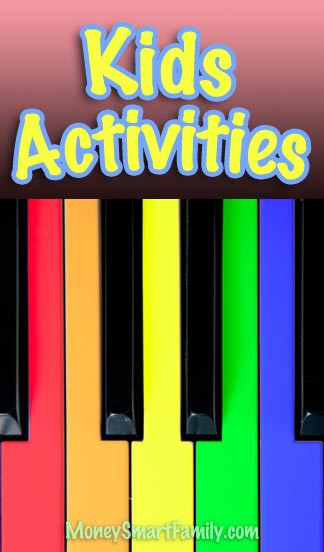This Activities for Kids & Teens Page has ideas for activities, clubs, programs, keeping kids busy during the Summer, and managing lessons, plus a whole lot more.
TABLE OF CONTENTS
- 1 This Activities for Kids & Teens Page has ideas for activities, clubs, programs, keeping kids busy during the Summer, and managing lessons, plus a whole lot more.
- 2 Summer Activities for Kids & Teens
- 3 Recycled Piano Music
- 4
- 5 How to Afford Kid’s Activites
- 6 Special Birthdays
- 7 Rocket Science Clubs
- 8 Laughter In The Dining Room
- 9 Preschool Kids Summer Fun
- 10 Public Library Storytime
- 11 Music Lessons for Kids in the Most Affordable Way
Activities for Kids can cost a chunk of change. We want our kids to grow up having wonderful family experiences and opportunities for enrichment and personal development. But lessons, sports, and parties can be expensive. This page is full of ideas for making life and lessons full of fun without spending a fortune doing it.
Summer Activities for Kids & Teens
We use summer for fun and relaxation. But we also use Summer for work projects and training in the care and management of a home. If the kids had their way, it would be sleeping half the day, playing the rest and, of course, being waited upon hand and foot!
I create a summer schedule with a routine for each day. They have regular chores like always, along with practicing piano. Three or four days each week we do a home project for 1-3 hours where they are helping to deep clean the house.
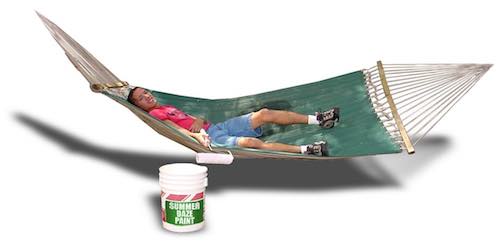
This includes: washing windows in bathing suits and getting wet; scrubbing blinds; scrubbing pool tile and patio furniture; and yard work. It also includes pulling everything off of every shelf and out of every cabinet to clean. And then weed out stuff not being used. We try to go through every room of the house.
Other summer chores are computer file “clean -up”, cleaning freezer and refrigerator, and organizing and storing keepsakes from the school year. We also enjoy scrapbooking and putting photos in albums. Of course, I am home with them over the summer so all this deep cleaning can take place. I schedule time for them to work on cooking skills, from planning healthy meals to preparing them.
Keeping Teens Busy During Summer
Now that they are getting older, we painted their bedrooms together. They also work on taking their financial skills to a deeper level with the help of Crown Financial Ministries materials. One day of the week we do a service project, such as helping at church, a ministry we support or write encouraging notes to missionaries.
Friday is “Fun Friday”. Each child gets to pick something they would like to do, such as invite a friend over for swimming, go to a museum, or watch a movie and make popcorn. If what they want to do costs money, we try to use a coupon, and they help pay for it with their spending money. How much free time they get depends on how hard they work, with a good attitude.
I find that there is a lot less bickering and no complaints of boredom, plus they are learning essential skills for the day they leave the nest and venture out on their own. Lyn Haberstock – Phoenix, AZ
Recycled Piano Music
My kids have been taught to write in their piano books in pencil. When they are finished with the book, I erase all the writing and use them over again for the next one in line.
Holding Sheet Music Better
Another way we save on music lesson and music is that we use clothespins instead of the expensive music clips sold in the music stores. We use the clothespins to hold our music on the music stand or to hold the book open on the piano. They work great and cost next to nothing.
Debbie Ludwig – Papua New Guinea
How to Afford Kid’s Activites
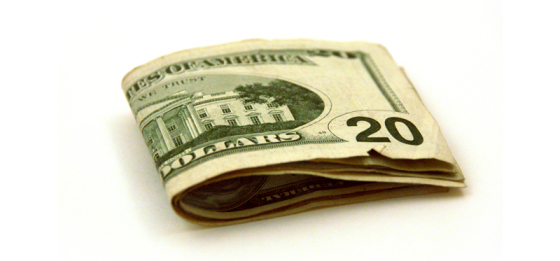
Question: How much money do you allocate per child for your kids’ extracurricular activities such as sports or music? I am very frugal and only one of my two kids is involved in an outside activity. But I can’t help wondering if I’m being too frugal and should sign them up for more things. Part of the reason I don’t is that those activities cost lots of money. What are your thoughts?
Answer: Every family’s situation is different. You have to decide what your priorities are and what you can afford. If an extracurricular activity is a high priority, then you may need to reduce spending somewhere else to afford it. We don’t know of any “formula” to help figure this out.
As a rule, we limit our kids to one outside activity at a time until they are in Junior High or High School. They help pay for the activity through fund-raisers, chores or working for other families. If money is tight and your kids are young, approach the sponsoring organization and ask about scholarships — you may need to volunteer in exchange.
We’ve seen some families go overboard, enrolling their kids in numerous activities and keeping them busy every day of the week. This caused stress for the kids and great expense for the parents — often times the kids didn’t even want to be involved in the activity.
Children Need Down Time
Children need help prioritizing choices and realizing that they can’t do everything they think they want to do. We only sign our kids up for an activity if they have expressed an interest for several months. Then we help them understand the costs and time involved.
Activities should never act as a babysitter for your kids. Time together with mom or dad doing chores, playing games, reading out loud, cooking dinner together and other such things should always be a part of your family life. This fills emotional health into your children.
Our daughter, Abbey, is a dancer with a 4H clogging group which costs $10 each month. We know there are other dance clubs that charge ten times that amount. Our focus is not the activity but helping the kids discover things they are passionate about and helping others. These activities may become a vocation or a hobby for a lifetime.
Do what’s right for your family and children, not what everyone else is doing.
RELATED ARTICLE: Free Educational Websites for Kids
Special Birthdays
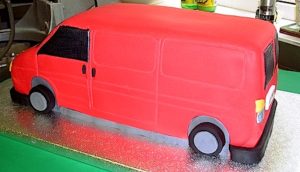
When my sons were little, we would make a special birthday cake for their party. They would choose the theme and we would design the cake together. The base for the cake was one or two 9” X 12” chocolate sheet cakes which we made together the night before the cake was to be cut out and assembled. Then, we froze the cake to make it easier to cut into shapes the following day without crumbling too badly when we applied frosting later. The Birthday child would choose the colors, frosting, etc. and we would add candy and toys as additional decorations.
Cardboard was used and covered in aluminum foil as the base for the cake. We made a cake in the shape of a guitar one year by tracing an actual guitar. Another year, we made a cake in the shape of a train with each car cut out separately and small cupcakes for wheels. We also made a cake in the shape of a van and at least one race car. Surprisingly, we made a volcano cake one year and found some candy rocks to put on it, and it turned out fantastic! Often, we would take the entire day to make the cake to the delight of both kids.
Also, our kids were allowed to invite only as many kids to their Birthday party as they were years old — if they were turning 6 years-old, they could invite 6 kids. That did not include their brother who was always invited. This kept the number of kids to a reasonable level. They never questioned the rule. When they became teenagers, they never wanted large parties.
Barbara S. – Freemont, CA
Rocket Science Clubs
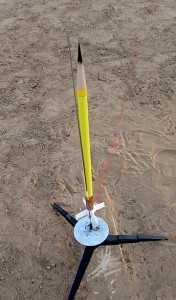
I participated in a project along with a friend who is an aerospace engineer. We helped a group of Explorer Scouts build and launch a rocket. My friend spent many sessions, helping these kids build the rocket and included great lessons in rocket technology, physics, mathematics, etc. They were also taught how to determine the altitude of the rocket flight. Then, we went to Vandenburg Air Force Base. The Explorers stayed in military barracks, toured the military base and launched the rocket. This project would involve locating an aerospace engineer with a specialty in rocketry to work with the young people and a location for the launch. There are also rocket clubs that may have qualified members willing to work with young people. On this same trip, we also enjoyed a tour of a nuclear power plant-more science lessons for the Explorers. Barbara Stratton – Fremont, CA
Laughter In The Dining Room

We collect a whole lot of jokes or other funny stories from The New Yorker or Reader’s Digest. We each take turns being the person to read them. They make us laugh, aid digestion and table conversation. It makes dinner a fun family time. A couple of favorite books I draw from are: Politically Correct Bedtime Stories and Poetry from Where The Sidewalk Ends. A.M. Kolstad – Houston, TX
Preschool Kids Summer Fun
Many years ago I was a nanny to a 3yr old girl named Sally. I would freeze grapes into a large rectangular block of ice. You could use a dishpan or other Rubbermaid plastic container for this. Sally would play with this ice block for hours. She would pull out the grapes and eat them one by one. Claire Nelson – Edmonds, WA
You can create a giant rectangular ice cube filled with plastic animals (like dinosaurs) to give to your preschoolers. Equip them with plastic toy screwdrivers, a wooden mallet or water guns, and let them have at it. It may take several hours to uncover everything, but they sure will have fun doing it. Samantha Johnson – Meridian, ID
Public Library Storytime
Before signing up for an expensive Mommy/Child playgroup, or Gymboree class, call around to different public libraries & investigate their story times for kids. I was amazed that my toddler and I could attend a weekly class that included songs, actions and playtime FOR FREE . . . and I wasn’t even a resident of this particular community, but I chose it based on the day and time of the class. It added to our song repertoire and we met new friends for no cost. Ann Thomas – Bridgeville, PA
Music Lessons for Kids in the Most Affordable Way
Music lessons and kids seem to go hand in hand — two of our five kids play instruments . . . the others play the radio. Over the years we’ve searched and landed some really good deals on instruments and also found some awesome instructors. Subscriber Donna Korzun from Dowagiac, Michigan offers some of her ideas (with our comments in italics) on how to get the most out of your musical instrument money . . . hey, these ideas don’t just apply to kids — some of you play instruments also.
1) Buy Used
Ebay, Craig’s List, auctions and garage sales often have great deals. Donna says that she bought a famous maker brand cornet for only $75.
We found the same thing when buying a trumpet for our son Roy. We went to music stores and pawn shops to try different trumpets. Once we knew the brand we wanted, we bought it on Ebay for much less. In 1994 Steve searched for six months to find a used Martin acoustic guitar and eventually found one at a downtown music shop. The guitar’s previous owner had traded it in. Steve bought a 1972 Martin D-41, which was selling new for $2700, for only $900.
Donna continues: If you are buying used check with your child’s band director for a list of approved instruments.
2) Buying New
New instruments can be found at local music stores as well as on eBay. But a strong word of caution is needed here. Many salespeople are encouraged to sell certain lines and brands which may not be suitable for your child. Stick with the list from your band/orchestra director. There are many new instruments on eBay and in stores that are made in China or India. Beware of these brands.
They are often inferior instruments that may not play or be unable to play in tune. Many music repair shops will not work on these particular instruments. Also, do not be talked into upgrading to an intermediate or professional instrument. These types of instruments often require an advanced level of skill to play and will only frustrate the beginner.
3) Know your prices BEFORE you shop
Doing lots of research before you buy will give you knowledge, and that knowledge will give you the power to know a great deal when you see one. Talking to a repair shop or an experienced musician can really help you know what to buy and how much it should cost.
4) Rent Your Musical Instrument
This may not sound like a way to save money, but it can be for the following reasons:
- a) If the instrument needs repairs you won’t have to pay for them.
- b) If parents don’t have access to the needed funds to purchase the instrument the child can still play.
- c) The student may be less enthused than the parents and /or may want to switch to another instrument later.
- d) Just be sure to calculate the total rental price for the semester and be sure that it is less than the price of buying a good used instrument.
5) Borrow from Your School
Check with your band or orchestra director to see if the school has any instruments that your student could use. Often tubas, baritones, bass clarinets, and drums are provided by the school free of charge.
6) Saving on Instrument Repairs
Make sure you and your student know how to properly care for the instrument to avoid costly repairs.
7) Private Musical Instrument Lessons
Use some of the money you save to purchase a few private lessons. These lessons can really spark a love for music by quickly building skills and confidence. Get names of teachers from your child’s band director and /or check with a local college for the names of students who may be teaching.
8) Practice, Practice, Practice
Remember that you WILL be enduring “squeaks” and “squawks” for quite some time. It is normal and to be expected.
We scheduled daily music practice as part of our MoneySmart Kids program. The kids knew when they had to practice and for how long. Some private lesson teachers provide a practice log where students can record their practice time. It is a helpful tool for the child to track their progress. Helping them remember to practice will help them to succeed.
9) Enjoy and Encourage
Enjoy your child and watch their musical skills blossom. Lavish large and regular doses of encouragement and they will excel.
10) Giving Back to the Community
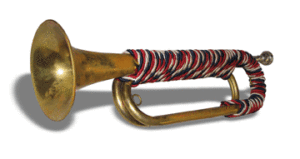
Our son Roy plays trumpet and decided to volunteer at our veterans National Memorial Cemetery to play Taps at military funerals. We found a group called Bugles Across America who will give a used bugle to anyone who volunteers to play Taps (instead of a recording) at memorial services. We contacted the group and Roy now has a great bugle. You can learn more or donate here: BuglesAcrossAmerica.org
There are many benefits to music lessons. Between the math skills utilized, the discipline to practice, the joy of accomplishment and the awesome sound of a musical piece played well, you just can’t find many activities which are as beneficial.
If you’d like more ideas for saving money with kids, check out our third book, “The MoneySmart Family System.”
- If you’d like to see some of our favorite kids’ chapter books, click here.
- And if you’d like to see some of our favorite kids’ picture books, click here.
- Also, there are awesome kids holiday books here.
- And finally, here are some terrific family movies.
- Well now, I just thought of something else, click here for a great blog about Summer jobs for teens.
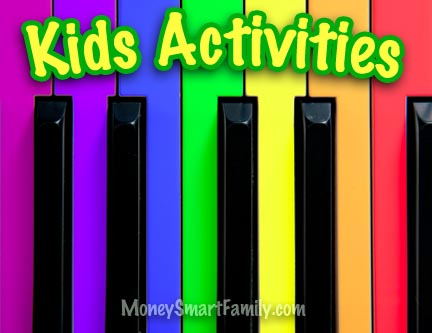
If you have a favorite inexpensive Kids Activity that isn’t listed, please mention it in the comment section below.

